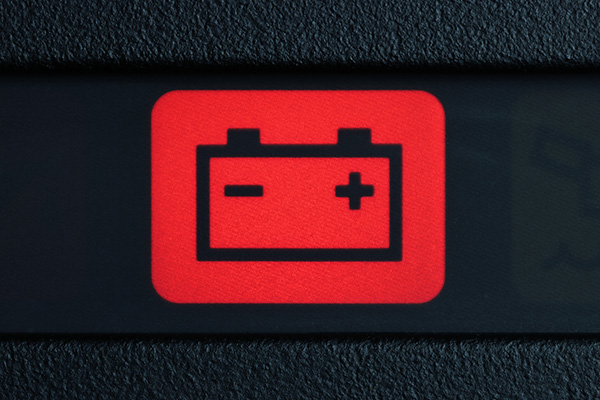
Your dashboard lights are designed to give you critical information about your car’s health, and few lights grab attention, like the battery warning light. When this light illuminates, it’s often accompanied by questions like: “Is my car going to stop running?” or “Do I need a new battery?” While seeing this light can be concerning, it doesn’t always mean your battery is the culprit. Let’s see what the battery warning light signifies, what might cause it to turn on, and what you should do next.
The Battery Warning Light
The battery warning light isn’t just about your car’s battery—it’s an indicator of your vehicle’s entire charging system. This includes the alternator, battery, and other electrical components. When the light turns on, it means that something in this system isn’t functioning correctly, which could lead to a drained battery or, worse, your car stalling completely.
Unlike a check engine light, the battery warning light often signals a problem that requires immediate attention. Ignoring it can leave you stranded, so it’s important to address the issue promptly.
Common Reasons for the Battery Warning Light
There are several potential causes for the battery warning light to activate. Here are some of the most common culprits:
Failing Alternator
The alternator is responsible for charging the battery while the engine is running. If it stops working, the battery will drain because it’s no longer receiving a charge. Symptoms of a failing alternator include dimming lights, electrical malfunctions, or whining noise from under the hood.
Worn or Broken Drive Belt
A worn or broken drive belt can prevent the alternator from operating properly. Without this belt functioning, your alternator can’t generate the necessary charge for the battery, leading to the warning light coming on.
Dead or Weak Battery
While the light isn’t exclusively about the battery, a failing or dead battery is a common cause. Car batteries lose their ability to hold a charge over time, especially in extreme temperatures or after years of use.
Loose or Corroded Battery Connections
If the battery terminals are loose or corroded, they can’t transfer the electrical charge efficiently. This can trigger the warning light and lead to performance issues.
Faulty Voltage Regulator
The voltage regulator ensures that the alternator supplies the right amount of voltage to the battery and electrical system. If it fails, the system might overcharge or undercharge, triggering the light.
Electrical Problems or Blown Fuse
A blown fuse or an issue with the car’s electrical wiring can also cause the battery warning light to illuminate. This is less common but still a possibility to consider.
What to Do If Your Battery Warning Light Comes On
If the battery warning light appears, it’s important to act quickly but calmly. Here’s what you should do:
Minimize Electrical Usage
Turn off non-essential electronics such as the radio, air conditioning, and heated seats. This will conserve power and keep your car running longer.
Avoid Turning Off the Engine
If possible, avoid shutting off the engine until you reach a safe location or repair shop. Restarting the car can put additional strain on the battery.
Get Professional Assistance
The best course of action is to have your car inspected by a professional. A technician can diagnose the issue and ensure your charging system is functioning properly.
How Long Can You Drive with the Battery Light On
How far you can drive depends on the health of your battery and whether the alternator is functioning at all. In most cases, the car can run for 20–30 minutes on battery power alone before shutting down. Use this time to safely reach a repair shop or parking area.
Preventive Maintenance to Avoid Battery Issues
Regular maintenance is key to preventing battery warning light incidents. Here are a few tips to keep your car’s charging system in optimal condition:
- Test the Battery: Have your battery checked regularly, especially if it’s more than three years old.
- Inspect the Drive Belt: Ensure the drive belt is in good condition and replace it if worn.
- Clean Battery Terminals: Remove any corrosion and ensure the terminals are tight.
- Monitor Electrical Systems: If you notice flickering lights or dim electronics, don’t ignore the warning signs—get your car inspected.
Is your battery warning light on? Visit Roesbery Car Care Walnut Creek in Walnut Creek, CA. Our skilled team can diagnose and resolve your electrical issues, ensuring safe and reliable performance. Schedule your appointment now!